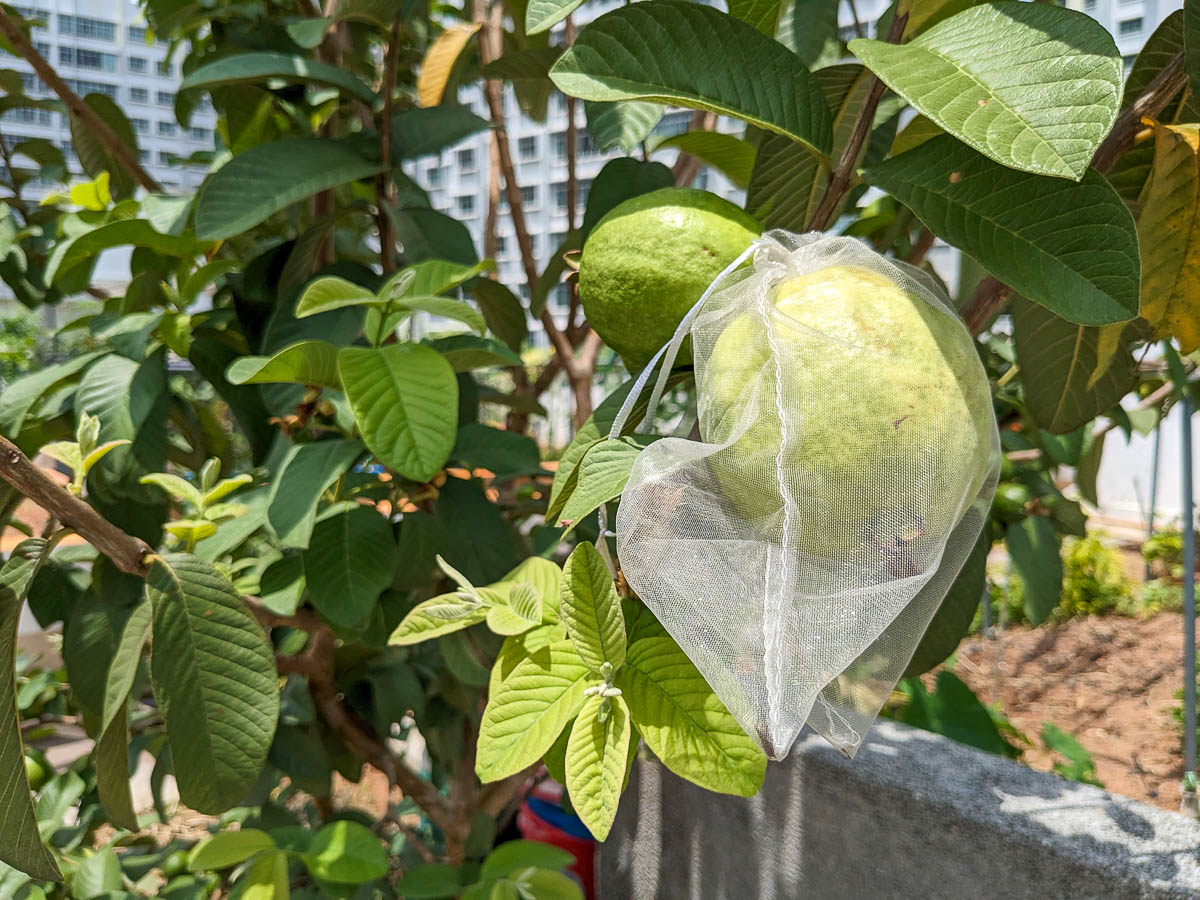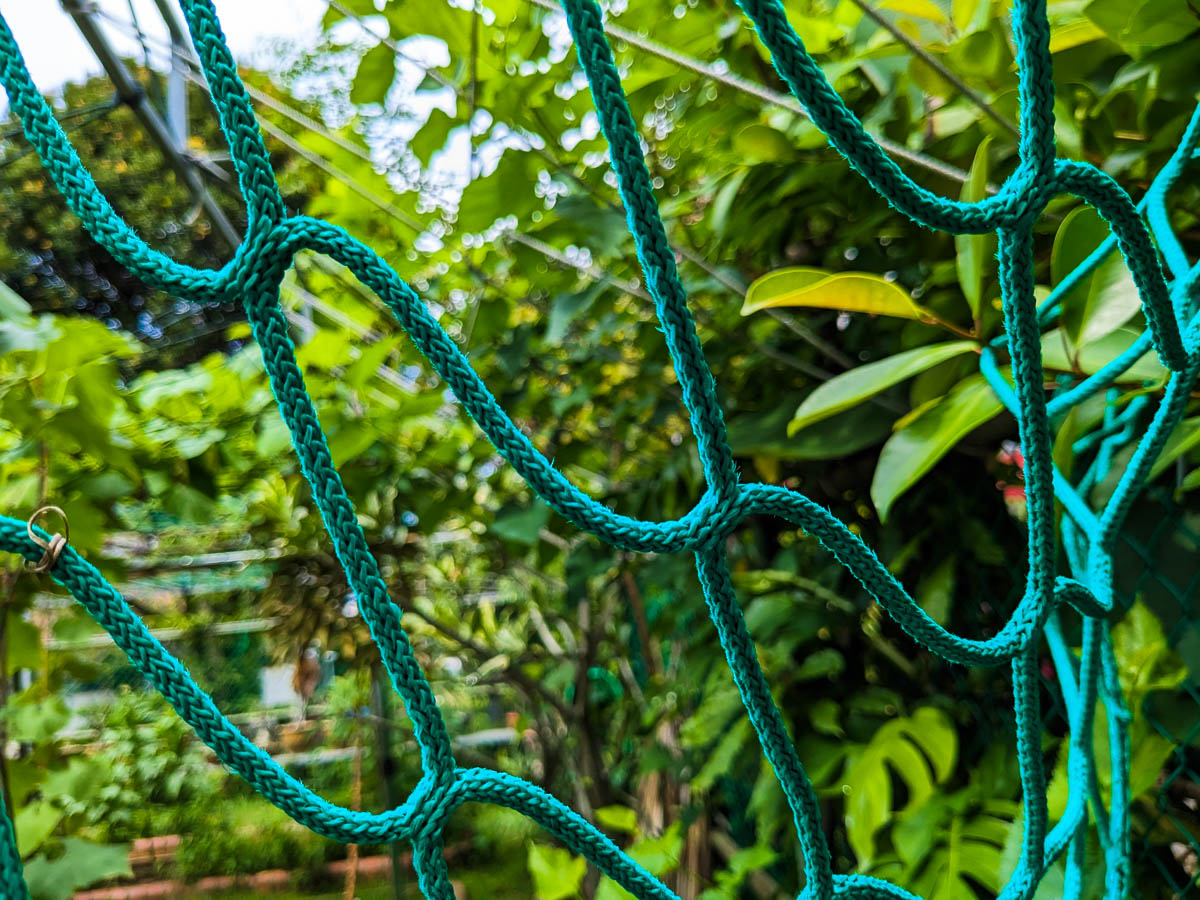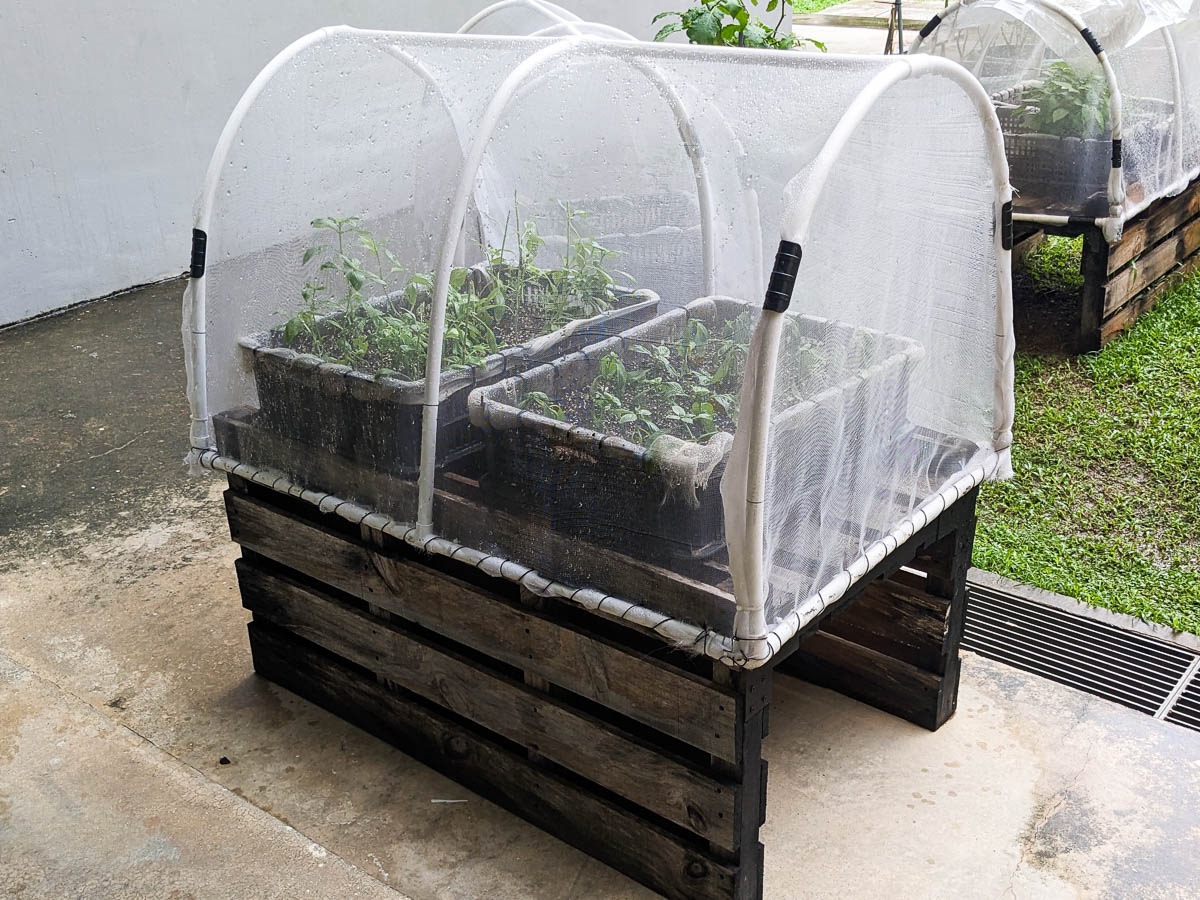Netting
Netting within the garden can be used to protect your plants from pests, heavy rain, or scorching sun. Netting frames can be of various materials that are durable under the elements, but it must be stable enough for nets to be pulled tautly across the edges. The colour and mesh size will influence how your netting will be used in your garden.
Colours

Black shade netting comes in various shade percentages, with higher percentages indicating denser shade. Black shade netting is usually used for growing full shade or partial shade plants in gardens that are full sun, or to make shaded propagation stations.
.jpg)
White netting will let sunlight through and are usually used to protect plants from pests or heavy rain. Most leafy vegetables like Cai Xin and Lettuce will benefit from being completely netted up, while individual fruits on fruiting shrubs like Brinjals and Tomatoes can also be protected with small bags made from white netting.
Mesh Size

Fine mesh will prevent almost all insect pests from reaching your crop. It will also break up large rain droplets into a fine mist.

Bird netting is large enough for most insects to pass through but will still protect your crop from birds. Netting with large holes like this can also be stretched across poles to make a trellis.
Types of materials for netting frames
Frames can be made from a variety of materials, or bought with the netting itself at nurseries or online. Some common materials are:

Plastic frames — are flexible and light. They generally last between 1-10 years, but prolonged exposure to the sun can make them brittle. Most plastic frames can be bought at plant nurseries and garden shops, and can also be made from PVC pipes for additional customisation.
.jpg)
Metal frames — are heavy and resilient. They last between 3-10 years, but may be prone to rust if they are not coated with paint or glaze. They also tend to heat up when exposed to a lot of sunlight, which can cause plants to burn on contact. Metal frames can be made from wires, metal pipes or poles with soldering.
.jpg)
Wooden frames — can be heavy or light, but are also biodegradable and lasts between 3-5 years in the tropics, even when coated with resin and other waterproofing materials. Wooden frames are commonly upcycled from old bedframes, plywood and palette wood.
Safety
.jpg)
Netting frames should all have footing, which is a portion of the frame driven into soil, lashed to supports, or stabilised with concrete or weights underground. Frames should be stable enough to endure shaking by people and windy conditions within the garden.

Some frame materials like plastic or metal may have sharp points or consist of hollow poles. Caps can be used to shield gardeners from points and to prevent water collecting in the poles, which is an important part of managing mosquitoes in the garden.

